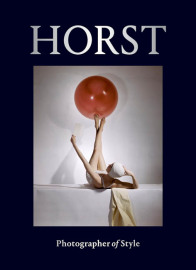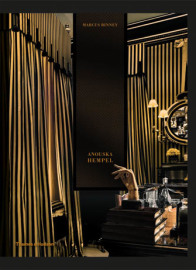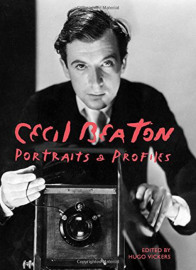SILENT PARTNERS: Artist and Mannequin from Function to Fetish
The history of these elaborately made mannequins – or ‘lay figures’ as they are also known – has indeed been largely silent these last 500 years, during which time they have been used by both painters and sculptors as a stand-in for live models. It turns out that the articulated human figure made of wax or wood, has been as essential a tool as easel, pigments and brushes, in artistic practice since at least the 16th century. Their intriguing history has been brought to light in this exquisitely detailed book and exhibition by Jane Munro of the Fitzwilliam Museum in Cambridge. The two key questions explored by Munro is what role these articulated models have played in the creative process; and secondly why it is that in the age of mass media, these slightly disconcerting figures still seem to fascinate us.
Vasari mentions the use of articulated mannequins by Fra Bartolomeo (1472 – 1517) in his ‘Lives of the Artists’, describing how the artist “to be able to draw draperies, armour, and other suchlike things… caused a life-sized figure of wood to be made, which moved at its joints.” Vasari was so fascinated by this mannequin that he fondly treasured it even though it had become completely worm infested. These figures had the obvious advantage that they could be manipulated into lots of complex shapes that unlike their human counterparts, could be held indefinitely and without adverse consequences. Millais had for example acquired his lay figure after his friend had seized up following seven hours of holding the same pose.
The silent compliance of the ‘lay figure’ was forever broken during the 19th century, during which time their use had become widespread. Their popularity prompted some critics to lampoon artists for an over reliance, that had sometimes resulted in some rather stiff and unnatural looking representations. It is at this time that artists completely ‘outed’ these figures from their former obscurity, transforming their role from mere tool to becoming the fetishised subject or muse of many art works. It’s no surprise that this transformation takes place during the 19th century, during which time psychology as a discipline was to fully emerge from the shadow of philosophy, to stand up both as a discipline and practice in its own right. In artistically exposing their all too willing partners, artists were exploring the many complex psychological undercurrents of the age concerning sexuality (fetishism), sexual politics (the objectification of women) and existentialism (what it means to be human).
These are the themes that have been developing at a far faster pace in the 20th century, as exponential developments in both our culture and technology have disconcertingly placed the mannequin firmly and forever on both sides of the existential mirror, both as an inanimate servant of humanity and also as a potential challenge to it; from model, teaching aid, clothes horse, sex toy to virtual reality avatar and now even android robot – the march of the mannequin seems unstoppable.
Inevitably artists, photographers, filmmakers, authors, philosophers as well as both science and industry have responded to its uncanny, and highly suggestive potential. From the very start it seems that man has fantasised about breathing life into these mannequins. The zealous have for centuries prayed for signs from divinely manipulated santos; and when an effigy of the Virgin Mary has cried tears or an effigy of Christ has bled, pilgrims have and continue to flock in worship. Rather prophetically life seems now to be imitating art, as Pinocchio matures rather terrifyingly into Ava, the android or cyborg subject of Alex Garland’s latest film, Ex Machina (watch the trailer below). This film’s exploration of what it is to be human in the age of artificial intelligence, along with the age old desire of humans to become God and transcend our fleshy bodies into something greater, is now one of the main themes of human enquiry. One of the key debates of our times relates to the levels of consciousness and self-awareness of our human stand-ins. A consciousness that we are even able to measure with the help of the so-called Turing Test; the term given to the various ways in which artificial intelligence (AI) is measured against that of humans.
Is it perhaps that floating around on this tiny speck in space, we grow anxious in case we are alone, that we always crave the existence of the ‘other’, searching for signs of extraterrestrial life, creating gods to worship or now finally usurping divinity and creating new species to serve and worship us?
Once lifelike but now no longer lifeless, the age of the mannequin is only just beginning. How extraordinary has been the story of the emergence of this once inanimate piece of studio equipment, from model stand-in into a fully fledged stand-in for humanity itself, that may yet – like Frankenstein’s monster -challenge us in ways that we have already imagined.
The exhibition ‘Silent Partners: Artist and Mannequin from Function to Fetish‘ will be travelling on to the Musée Bourdelle, Paris following its run in the UK, and is accompanied by a generously illustrated book
‘Silent Partners: Artist and Mannequin from Function to Fetish’ by Jane Munro, published by Yale University Press
To order ‘SILENT PARTNERS Artist and Mannequin from Function to Fetish’ please visit GDC interiors Book Collection on Amazon
Main Image: Denise Bellon (1902–1999), Salvador Dalí holding an artist’s lay figure the chauffeur in the Taxi pluvieux), International Exhibition of Surrealism, Paris, 1938 Gelatin silver print, Fonds Photographique Denise Bellon, Paris © Les Films de l’Équinoxe – Fonds Photographique Denise Bellon © Salvador Dalí, Fundació Gala-Salvador Dalí, DACS, 2014


























